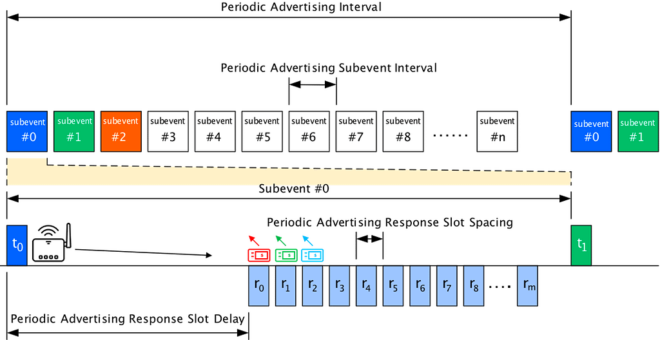For 20 years, products developed by the Bluetooth® community have been driving global innovation and creating new wireless markets. Of all the impacts made by the Bluetooth member community in the past two decades, one of the most significant is the revolution of local data transfer.
How It All Started
The Bluetooth® Low Energy radio is optimized for low-power data transfer, making it ideal for connected device products. And that was the goal from the start, as Bluetooth technology was originally conceptualized as a general-purpose connectivity solution, not just an audio streaming revelation.
“The challenge Bluetooth had was that it was primarily used for audio streaming,” said Lee Ratliff, IHS Markit. “To attack these adjacent markets and the IoT, they really needed to morph the technology. With the introduction of Bluetooth Low Energy, Bluetooth really regained that general-purpose connectivity technology promise from the early days.”

Once the technology was available, the Bluetooth member community was quick to run with the concept of a low-energy, short-range wireless solution. Before long, Bluetooth Low Energy jumpstarted the connected device market and enabled a broad range of devices from sports and fitness to health and wellness and beyond.
“With the introduction of Bluetooth Low Energy, Bluetooth really regained that general-purpose connectivity technology promise from the early days.”
“Bluetooth came into the wearables conversation from the start,” said Dan Rosenbaum, Center Ring Media. “The connection between something you’re wearing on your wrist or in your ear that connects to your phone and to the larger world, the first step of that connection is a Bluetooth connection.”
In the last few years, the use of fitness trackers and smart watches have gained overwhelming popularity. Chances are, whether it’s for step counting or to track workouts, you know someone using some type of wrist device that’s talking to their phone. “As sports devices become more capable and more sophisticated, gathering more data, and as the value of that data stays high when it’s freshest, Bluetooth is important because it’s the first jump,” said Rosenbaum. “It’s the thing that gets the data from the device into the world.”
Now, Bluetooth enabled connected devices have evolved beyond sports and fitness to support a wider range of products and markets, making an equally significant impact across health and wellness. Wearables have become an important part of in-home care, helping with the administering of medication, supporting injury and wellness diagnoses, and monitoring health conditions.
“Wearables play a really important part, not only in sports but also in enabling our society as well.”
“Wearables are going to be an incredibly important part of enabling and managing our parents and grandparents living at home longer in a safe way,” said Stuart Carlaw, ABI Research. “And that’s only enabled by the fact that we have a low-power, robust, standard platform like Bluetooth. So, wearables play a really important part, not only in sports but also in enabling our society as well.”

Why Use Bluetooth for Transferring Data
The main reason why Bluetooth® technology has become so popular for use in such a wide range of connected devices is due to its ability to enable a low-power connection from an inexpensive, tiny point of origin that can be attached almost anywhere on almost anything.
“The biggest problem is power consumption, and Bluetooth Low Energy is the only wireless solution power efficient enough where you could build a product that could last a full year on a small coin-cell battery,” said Mike Farley, CEO and co-founder of Tile. “Plus, it is the only wireless solution that’s on your phone.”
And the technology keeps getting better. Bluetooth semiconductors have now improved to the point where more and more people are leaving Bluetooth on all the time, with only a negligible impact on battery life.
“I look at it from the consumer standpoint, and they just want products to work,” said Farley. “What Bluetooth has done with the advent of Bluetooth Low Energy is allow for technology companies to build applications that make a completely seamless solution. It makes configuration super simple.”
For developers, product managers, and engineers who are considering making new types of products, Bluetooth is the go-to choice for consumer connectivity.
“I think the goal was always for it to be invisible and just to be there,” said Simon Ellis, Principal Engineer for Intel. “And so, you’re sort of unaware, but you’re using it on a daily basis without even thinking about it.”
The Foundation for Global Connectivity
The launch of Bluetooth® Low Energy helped realize the original vision for the technology, and it’s a powerful example of the culture of innovation created by the Bluetooth member community.
“What excites me most about Bluetooth is innovation,” said Ratliff. “And it’s the innovation of the people who have created Bluetooth and the innovation of people who are using Bluetooth to make new categories of devices that we’ve never experienced before.”
To learn more about how Bluetooth technology is impacting data transfer and the connected device market, download the 2018 Bluetooth Market Update.
![]()
FEATURED REPORT
Bluetooth® Market Update
See the most important trends and forecasts for Bluetooth® technology, and learn how the Bluetooth community continues to solve new connectivity challenges and address new market opportunities.

![Forbes Predictions article 72 dpi 1300 x 680 px 768x402[1]](https://www.bluetooth.com/wp-content/uploads/2024/04/Forbes-Predictions-article-72-dpi-1300-x-680-px-768x4021-1-660x345.png)
























